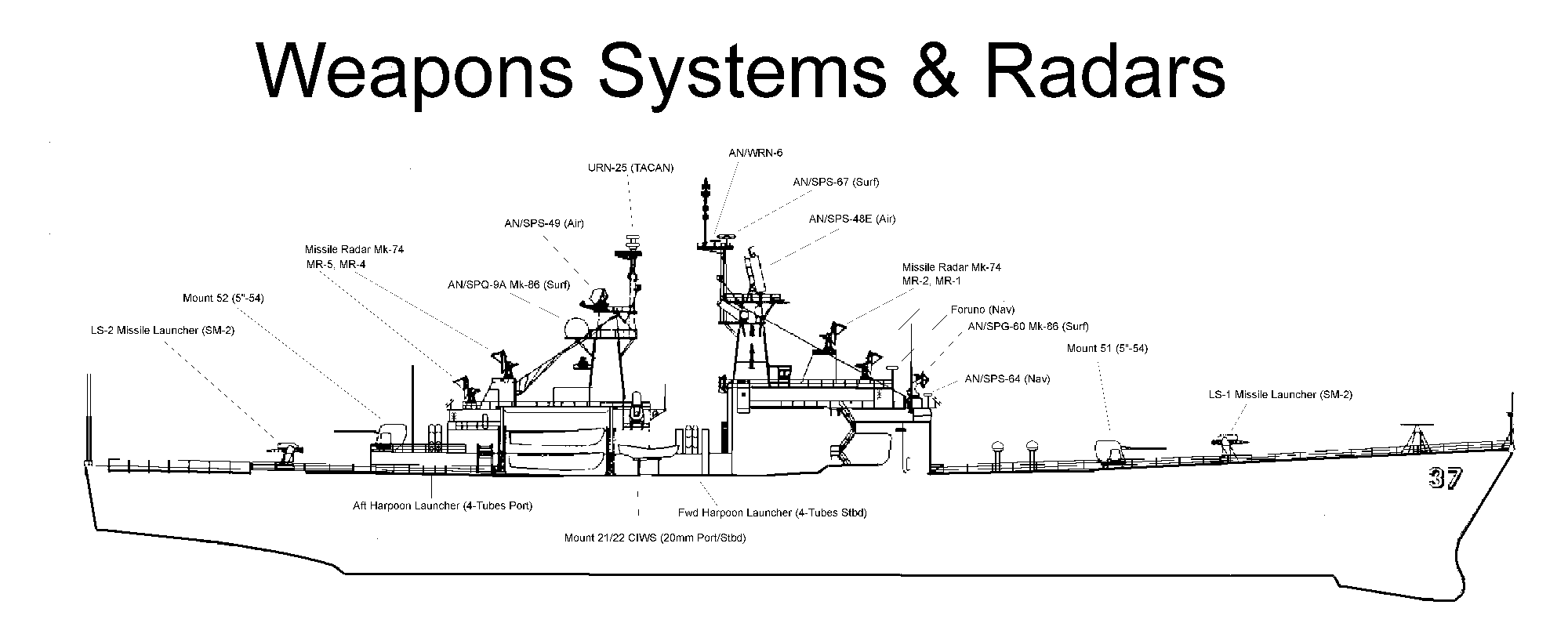regarding Virginia/Kidd assuming you want ~16 ASROC aboard and you put them all in the forward launcher and you still need 2 guided missile training rounds, that would leave only 6 Standard for the forward launcher yes. but the launcher/illuminators were not used in such a "married" way as far as I know, the practice is to turn broad side to an air threat IE you may care about fore/aft initially but you use whichever illuminator for whichever missile as the situation develops
I guess in practice it was found that even for a saturation attack you don't need to illuminate more than 3 targets at once but that sure seems penny-wise/pound-foolish especially when as mentioned, California with only 2 shots every ~10 seconds can support 5 missiles in terminal homing (compare this to a circa 1998 Burke which could put 10 birds in the air in that time if needed)
FAS illustrates the California layout well

SPG-60 I would imagine is considered MR-3 here
I guess in practice it was found that even for a saturation attack you don't need to illuminate more than 3 targets at once but that sure seems penny-wise/pound-foolish especially when as mentioned, California with only 2 shots every ~10 seconds can support 5 missiles in terminal homing (compare this to a circa 1998 Burke which could put 10 birds in the air in that time if needed)
FAS illustrates the California layout well

SPG-60 I would imagine is considered MR-3 here

